Welcome party
A welcome party will greet all participants in the afternoon of the Sunday preceding the Colloquium.
Time: 18:00-20.00, June 19th
Venue: Roof Top Hotel Royal (10th th Floor)
Address: Via Partenope, 38 (seafront district)
Coupon: Full and reduced Delegates and Students fee + Accompanying persons
Transportation will not be provided

Young researchers night
A special event for the younger participants, “The Young Researchers Night” is planned for Tuesday in an enjoyable place in the historic and alive city center.
Time: 19.30 -21.30, June 21th
Venue: Fratelli la Bufala, Mergellina
Address: Via Caracciolo, 10 NAPOLI
Coupon: Students
Transportation will not be providedDirections: You can easily reach the venue by Metro Line 2 Stop Mergellina. From the Metro station it takes 5 minutes walking distance towards the sea front.
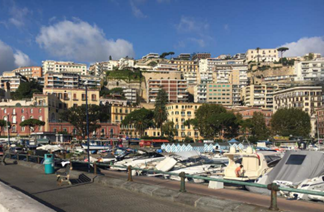
Excursion
An excursion is scheduled from midday to late afternoon on Wednesday as an informal relaxing occasion.
Time: 14.30-21.30, June 22nd
Depart by bus from: School of Engineering, P.le V. Tecchio 80
A spectacular excursion has been organized for the participants to ICDERS.
The program will include a visit to the Pausilypon Archaeological Site and to the Piscina Mirabilis. The tour will end with a get together party on a nearby Beach Club.
Pausilypon Archaeological Site
Thanks to the recovery work being done by the Archaeological Sovrintendenza of Naples and Caserta and the contribution of the Comune of Naples, a first nucleus of the huge Pausilypon archaeological site has been permanently reopened to the public.
The fascinating tour begins at the entrance at the end of Coroglio descent, where the magnificant Grotta di Seiano begins. This is a man-made tunnel whose 770 metres run through the tuffaceous hill of Posillipo, connecting the area of Bagnoli and the Flegreaen Fields with the Gaiola deep valley.
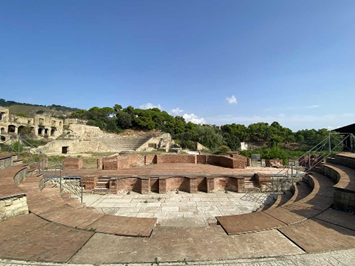
This ancient passageway, which was dug out about two thousand years ago and reinforced in the Bourbon period, snakes through the fascinating half-light of the tunnel and then is struck towards the end by the blinding light from side underground passages on the steep coves, which offer a breathtaking view.
Beyond the cavern, we take a path lined with typical Mediterranean vegetation and come to the area of the villa to which Vedio Pollione, a wealthy Roman knight to Ottaviano Agusto, gave a name of Greek derivation, “Pausilypon”, or “place which stops all the cares” in order to describe the spell and the beauty of this place called Posillipo.
The villa is adaptable to different circumstances, and was enlarged to satisfy the needs of an imperial residence whose full extent will be discovered only when the Archeological Sovrintendenza will complete the work with the final aim of opening this archeological site of Pausilypon to the public.
There are remarkable archaeological remains in this area – a theatre of splendid structure with 13 rows of seats in the top auditorium and 6 in the middle one, an overall seating capacity of two thousand which exploited the natural slope of the hill, in accordance with the typical technique of Greek amphitheatres. On the opposite side are the remains of the Odeion, the ancient roofed theatre used for recitals of rhetorical poetry and musical performances, which has a small “cavea” or auditorium positioned in front of the large Theatre.
Piscina Mirabilis substituted with visit to “Antro della Sibilla” (see below)
The Water Cathedral – Piscina Mirabilis is the largest and most monumental cistern of drinkable water ever built by the ancient Romans. It had the function of supplying water to the numerous ships belonging to the Classis Misenensis of the Roman Navy, once moored in the nearby port of Miseno. The cistern, also known as “the Water Cathedral ” for its largeness and majesty, is located in Bauli, the name that the ancient Romans gave to the current city of Bacoli.
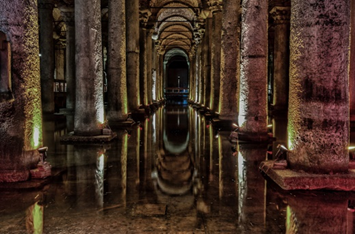
The Ancient Cistern – Piscina Mirabilis, partly dug into the tuff, had the capacity of 12,600 cubic meters of water! It was built on a quadrangular plan to obtain four rows of twelve cruciform pillars that divide the interior space into five long and thirteen short naves to support the vault. On the latter it is set the roof terrace paved in terracotta fragments and lime, communicating with the interior by several doors.
Piscina Mirabilis and the Augustan aqueduct of the Serino – Piscina Mirabilis represented the landing and arrival point in Bacoli of the ancient Augustan aqueduct which, from the spring of Serino (AV), located at an altitude of 330 meters and with a journey of 100 kilometers about, brought water to Naples and Campi Flegrei up to the eight meters of Piscina Mirabilis (now at an altitude of 2, due to bradyseism). The Augustan aqueduct was destroyed, between the 4th and 5th century AD. C and Piscina Mirabilis has no longer been used and as a matter of fact it is now emptied of water.
Cave of the Sibyl – Antro della Sibilla – Monte di Cuma
The Cumaean Sibyl was the priestess presiding over the Apollonian oracle at Cumae, a Greek colony located near Naples, Italy. The word sibyl comes (via Latin) from the ancient Greek word sibylla, meaning prophetess. There were many sibyls in different locations throughout the ancient world. Because of the importance of the Cumaean Sibyl in the legends of early Rome as codified in Virgil‘s Aeneid VI, and because of her proximity to Rome, the Cumaean Sibyl became the most famous among the Romans.
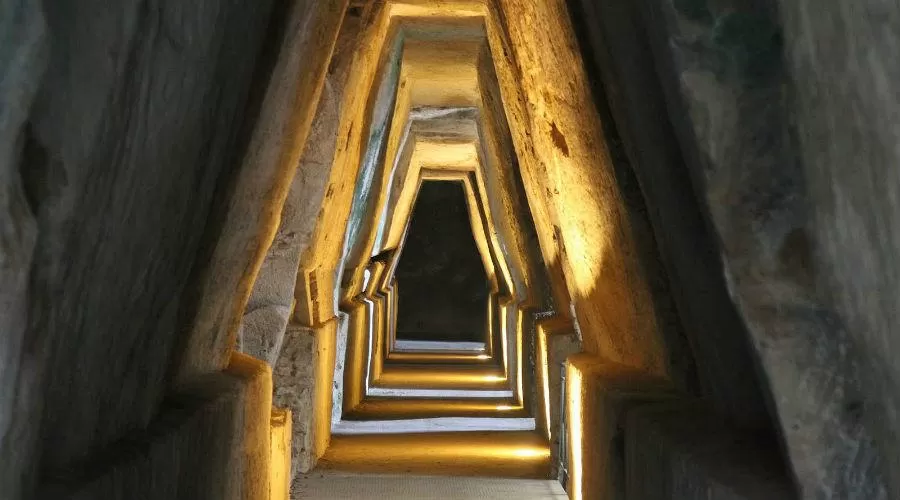
The Erythraean Sibyl from modern-day Turkey was famed among Greeks, as was the oldest Hellenic oracle, the Sibyl of Dodona, possibly dating to the second millennium BC according to Herodotus, favored in the east. (from Wikipedia)
A nice brief description of the history of this site can be found following this link.
After excursion dinner
Enjoy your dinner at a wonderful beach resort (maybe you can bring swimwear and towel with you) in the spectacular gulf of Miseno.
A music entertainment, “Napoli and beyond”, will accompany the evening with musicians Anna Galiano (vocalist), Matteo Dionisio Gulfo (guitar) and Antonio Pignatelli (trumpet).
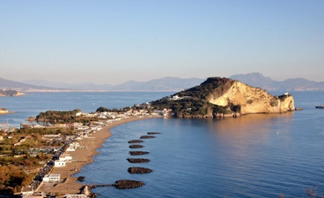
Time: 19:00-21.30, June 22nd
Venue: Tibidabo Beach Resort
Address: Via Miliscola, 57, Monte di Procida
Coupon: Full Delegate and Student registrations, Accompanying persons
Social dinner (banquet)
Banquet Time: 19:00-23.00, July 23rd (Buses departure time 18:15)
Venue: Cenacolo Belvedere Carafa
Address: Via Aniello Falcone 122, Napoli
Meeting point: Buses will depart from the School of Engineering at 18.15 and will come back at the same meeting point at about h. 23.00
Coupon: Full Delegate and Full Student registrations, Accompanying persons
During the Banquet the following prizes will be awarded:
R. I. Soloukin Award and J. H. S. Lee Young Investigator Award.
Term charge of Board of Directors Declaration; Site of 29th ICDERS, Host Chair, Program Chair
The venue
Formerly known as Palazzo Vandeneynden, and also known as Villa Belvedere, is a monumental villa in Naples, located in the hilly Vomero district.
Villa Belvedere represents a unique example of the oldest history of its neighbourhood, Vomero. It is around this structure, in fact, that the ancient Villaggio del Vomero developed. Over the centuries, there were numerous travellers who became fascinated with it, to the point of immortalizing it in painting, drawings and sketches. The Villa faces the wonderful Gulf of Naples.
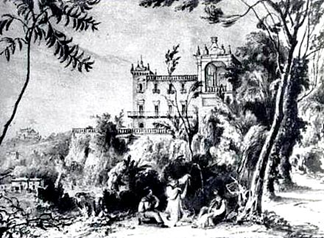
Farewell party
A farewell cocktail party will end the meeting.
Time: 12.30 June 24th
Venue: School of Engineering, Biblioteca Gasparini, 2nd floor
Note: Time of events is subject to change. Please refer to the arrangement onsite.